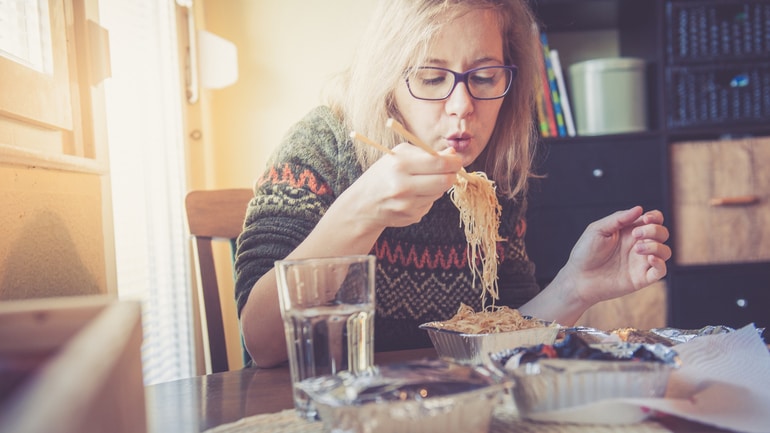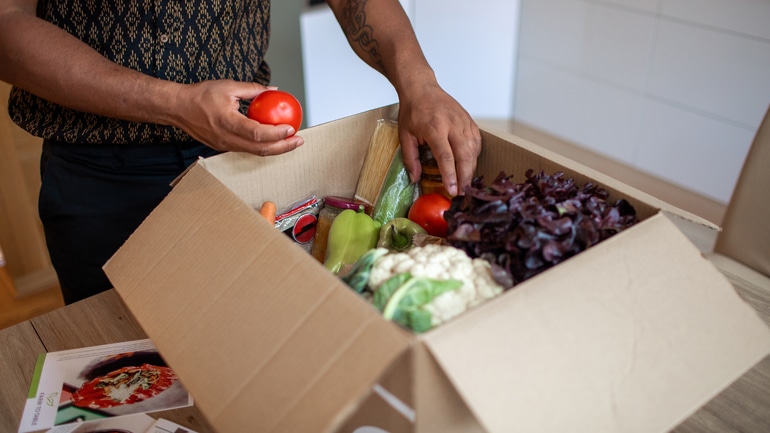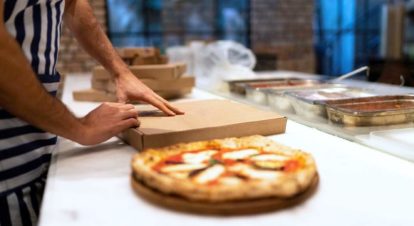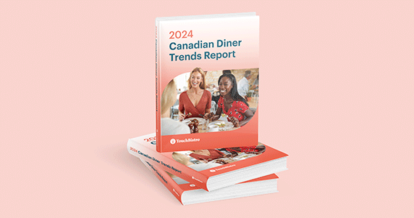Across the UK and around the world, restaurants and bars have been forced to close their doors to customers in an effort to stop the spread of COVID-19. With these new dining restrictions in place, many restaurateurs have watched their sales plummet, and some may never open for business again.
Despite the challenges, there is still a need for some restaurants to keep their operations going. From the essential healthcare workers who need a quick lunch, to seniors who are unable to cook, there is still a massive demand for restaurant fare.
To meet this demand, restaurants are coming up with creative solutions to keep their kitchens going and their communities fed. For some, this means creating a takeaway menu limited to just a few best-selling dishes. For others, staying open can involve anything from selling meal kits to turning their venue into a grab-and-go store that posts available produce on social media each day.
While these creative menu solutions aren’t an option for every restaurant, for those that are able to stay open, a limited menu can provide a valuable source of income during the COVID-19 crisis.
To help you make your own menu adjustments, this article will cover:
- How to create a temporary takeaway menu
- Alternative menu solutions, beyond takeaway and delivery
- Examples of how other restaurants are adjusting their menus
How to Create a Temporary Takeaway Menu
Though the UK government has enforced restaurant closures, you are still able – and encouraged – to offer takeaway and delivery options. As a result, one of the most common ways that restaurants have been dealing with the COVID-19 restrictions is to create temporary takeaway menus.
While it doesn’t make financial sense for every restaurant to pivot to takeaway, for some it may provide a vital form of revenue for the weeks ahead. In fact, a survey from Barclaycard found that takeaway sales grew by almost 9% in the early weeks of the outbreak — and that’s before the UK went into full lockdown!
For restaurants that are able to pivot to takeaway, we’ve compiled some helpful menu tips, including examples of what other restaurants are doing.

Maximise Your Earnings with a Smaller, Focused Menu
You’re probably well aware that you can’t (or shouldn’t) offer your restaurant’s full menu for takeaway. On the one hand, cost is more important than ever before and a limited menu means saving money on ingredients and the utilities needed to cook those dishes.
James Ramsden explains how his fine dining establishment, Pidgin, has stripped down to the bare essentials for their delivery and takeaway service:
“We’ve heavily simplified the menu, and we’re not trying to imply that people will get exactly the same meal as they would in the restaurant, which is reflected in the reduced price.”
On the other hand, a pared down menu is also necessary to reduce prep time. Many restaurants have been forced to make heart-breaking decisions about letting staff go, leaving them running on skeleton crews. With so few staff on hand, the smaller the menu, the easier it is to manage takeaway orders.
Remove Items That Don’t Travel Well
Part of creating a limited menu also involves removing dishes that don’t travel well. If your restaurant already offered to-go options before COVID-19, your takeaway menu is probably already optimised for travel.
But for restaurants new to takeaway, curating your menu might involve a bit of trial and error. Think carefully about which items on your menu may go cold or soggy when placed in a container for too long. For instance, chips are notoriously hard to keep crisp.
Some decisions may also be based on the type of takeaway containers you’re using. This is especially important as restaurants are increasingly turning to tamper-evident packaging to provide customers with peace of mind amidst heightened fears about food safety.
Poco Tapas in Stokes Croft, Bristol, has launched Poco-style DIY breakfast hampers and a takeaway menu of unique “Poco” burgers, which you can either order by “click and collect” on their website, or have their team deliver direct to your door.
In the case of Brooklyn, NY ramen restaurant Karazishi Botan, chef-owner Foo Kanegae created a takeaway menu made up of dishes that travel especially well. Instead of his usual offerings of Inari Mochi and French Fries tossed with matcha salt, Foo created a pared down menu that includes Tonkotsu Ramen, a Miso Botanical Ramen, and takeaway-friendly appetisers such as edamame and wings.
Remove Unpopular Items
If there’s a particular menu item that hasn’t been resonating with customers, now is the time to cut it. Regardless of the current economic situation, poor-selling menu items eat into your bottom line. Eliminating these unpopular choices can save you precious time and money.
It’s also worth noting that certain items that may have sold well in your restaurant, may not be as popular as takeaway options. COVID-19 has fuelled the sale of comfort food at grocery stores and some restaurants may notice a similar trend. Pay attention to what types of items customers are buying or even solicit direct feedback so you can eliminate poor performers quickly.
In Edinburgh, the Twelve Triangles bakery has launched an online shop for all local sourdough and pasty goods. The owners, Rachel Morgan and Emily Cuddeford, are offering their signature slow-fermentation sourdough varieties including white, wholemeal, charcoal, and seeded, in addition to a selection of popular pastries like hot cross buns and bear claws.
Put Product Development On Hold
Without the rush of packed dining rooms, it can be tempting to use this downtime for product development, but experts warn against this. As Joe Pawlak, managing principal with Restaurant Business’ sister company Technomic, explains, “It’s not the time to think about LTOs and new product development. They don’t have the runway. Do what you’re known for and ride that pony until this thing subsides.”
This is a lesson that Sqirl in Los Angeles has taken to heart. The restaurant’s Famed Ricotta Toast enjoys near cult-like status, and in the wake of recent dining restrictions, Sqirl has doubled down on its Instagram-worthy toast for takeaway and delivery.
Ultimately, your customers will want to order the tried-and-tested favourites from the menu. While it may be tempting to add some wild card experiments to your menu, you should hold off, and focus on your staples to ensure the orders keep rolling.
Prepare for Supply Chain Disruptions
While you have control over a lot of the changes to your menus, you can’t control the supply chain. Though the situation differs across the country, the CEO of the International Foodservice Distributors Association has warned that foodservice distributors are experiencing extreme financial hardship, due in part to labour shortages.
If there is a disruption to foodservice distributors, this could complicate your restaurant’s efforts to offer takeaway. Another potential problem is the lack of seasonal workers from abroad. UK farms typically welcome over 70,000 farm employees from Romania and Bulgaria to pick fruit and vegetables. With strict travel restrictions, and rising fears about the spread, farms may struggle to harvest their produce.
Some restaurants are already feeling the pinch when it comes to certain ingredients. English restaurant Bar Aldo has begun making fresh pasta and bread in-house because its regular pasta suppliers have been unable to keep up with the surging demand from retailers and other restaurants.
Even if many of your suppliers are still taking orders, you might not have enough cash on hand for the inventory. In this case, have a conversation with your suppliers about any outstanding bills or any orders that might need to be put on hold so you can adjust your menu accordingly. These can be tough conversations to have, but with everyone in the same boat, people are more likely to be understanding.

Other Ways to Adjust Your Menu During COVID-19
Though many restaurants have been able to adjust their menus for takeaway, not every restaurant has been able to follow suit. Faced with issues such as severe staff shortages and dwindling cash flow, some restaurants have turned to more innovative menu solutions.
Sell Pantry Staples
While restaurant sales have plummeted, grocery stores have seen record sales as consumers fill their cupboards in preparation for self-isolation. As retailers struggle to restock their shelves, many restaurants have attempted to fill the gap by transforming themselves into de facto general stores. That means scraping their regular menus and selling off individual ingredients to customers who are in immediate need of groceries.
London-based butcher HG Walter usually supplies Michelin-starred restaurants and hotels, including Harrods, the Savoy, and the Dorchester. After the pandemic threatened to cripple their business, the butcher launched an online home delivery service, offering “survival packs” made up of their stock items. Now, customers can place orders for fruit, vegetables, vacuum-packed meat, and the popular make-your-own Patty & Bun burger kit.
In Bristol, The Tobacco Factory has opened a drive-through service to help the local people, and ensure some staff can remain employed. People can visit the restaurant to collect cooked meals and groceries without leaving their car.
Sell Off Luxury Goods
Selling pantry staples such as milk and bread can be a great way to keep the community fed in uncertain times, but what about luxury goods?
For many fine dining restaurants, there’s little demand for them to turn their restaurants into high-end grocery stores. Instead, many are offering steep discounts on their remaining inventory to recoup a small portion of their costs.
This is the approach taken by New York City restaurant Huertas. Before shutting down completely, the Spanish restaurant sold off imported cans of fish, Manchego cheese, almonds, chorizo, and more, as part of a major “provisions sale.” The money brought in from these sales was then donated to the restaurant’s team.
In Chelsea, Manicomio has reinvented itself as a food and wine shop, offering customers bulk-buy deals on its premium meat and Bethnal Green fish. The restaurant has also begun offering fresh fruit and veg boxes, juices, and a wide variety of deli, pasta, and wine options.
Create Family Meals
For some restaurants, pivoting to takeaway and delivery is not nearly enough to fill the gap. To increase the size of orders coming in, they’ve shifted their efforts to feeding entire families, rather than individuals. This means adjusting their menu from single-serving dishes, to family-size meals that can feed four or five people at a time.
London BBQ restaurant Prairie Fire now offers vac-pack deliveries of its Kansas City-style smoked meats. You can order these with some beers and sides, then prep the meal yourself at home for the whole family. These shared platter type meals fuel the type of interaction we are all going to need in the weeks ahead.
Discount Kids Meals
In some cases, adjusting restaurant menus for families also means adding or expanding options for kids. This approach is vital for many families because the nationwide school closures mean many children who depend on school lunch programs may not be getting enough food each day. To fill that gap, a number of restaurants are changing their menus to offer free or discounted meal options for kids.
QOOT is a London restaurant group that includes renowned restaurant brands Dominique Ansel Bakery, By Chloe, The Lebanese Bakery, and Gentlemen Baristas. After the school closures were announced, QOOT decided they would offer free lunch to any child who would normally get school meals from the government.
The generous move has motivated other independent restaurants and groups in the UK to follow suit. Edinburgh’s Civerinos Food Club now offers a complimentary pizza slice to any children eligible for free school meals.
Create Meal Kits
With many restaurants operating on skeleton crews, there may not be enough staff on hand to prepare and cook entire meals. To combat this issue, some restaurants have begun deconstructing their menus and repackaging the raw ingredients as meal kits. These kits can then be cooked by customers at home, allowing restaurants to eliminate the time and cost of cooking full meals in-house.
Other restaurants have also positioned their meal kits as an interactive cooking experience for families. For example, Toronto’s General Assembly Pizza created family-friendly pizza kits that include individual containers of dough, sauce, cheese, and toppings. The brand even promoted the pizza kits as “so easy a kid could make it” – music to the ears of homebound parents.

Consolidate Inventory
For restaurant groups, the costs of keeping several venues open and managing multiple menus may not be an option amidst COVID-19 dining restrictions. To keep costs at a minimum, some have chosen to consolidate their inventory and adjust their menu based on what they have on hand.
If your restaurant has several branches, you could save a lot in running costs by closing all but one store. Bringing your inventory and popular menu items together to a central location will help you reduce overheads, and ensure that you can keep up with the demand for your takeaway menu.
Even if you only have one restaurant, there may be a way of banding together with other restaurants in the area in a show of solidarity. In Bristol, a collective of independent restaurants are set to launch an Independent Restaurant Association to support the hospitality industry and feed the city.
Sell Alcohol (If You Can)
As many restaurants have realised, adjusting their menu for delivery-only dining also includes figuring out what to do with their alcohol inventory. Restaurants have sought out creative ways to sell off the alcohol that normally accounts for a significant percentage of their total revenue.
For instance, Shoryu Ramen offers Japanese beer, wines, and sake on its menu via Deliveroo. So, customers of the Piccadilly haunt can now enjoy ramen and bao buns at home with some sake or Asahi.
Donate to Those in Need
In spite of these creative menu solutions, some restaurants are unable to stay open in any capacity – even with a limited menu. Instead of letting their food go to waste, these restaurants are looking for ways to give back to their staff and their local communities.
Once again, Deliveroo has stepped up in the crisis by offering 500,000 free meals to the NHS staff on the frontline of this pandemic. Many key workers in the health service struggle to find the time to shop or cook now, and food shortages in UK supermarkets have exacerbated the problem. Donations from restaurants have poured in, as many people are keen to help these vital staff members however they can in these dire times.
With such an unprecedented situation before restaurant owners, it’s clear there’s no one way to respond to COVID-19. While takeaway menus and other adjustments are helping some restaurants stay afloat, others have chosen to abstain entirely and put their operations on pause. All you can do is take stock of what options are most relevant to your restaurant and make the best decision for your business, your staff, and your customers.
Our team is continuing to put together resources for restaurants impacted by COVID-19. If there is any topic you would like to see or story you would like to share, you can contact our resource team directly at [email protected].







